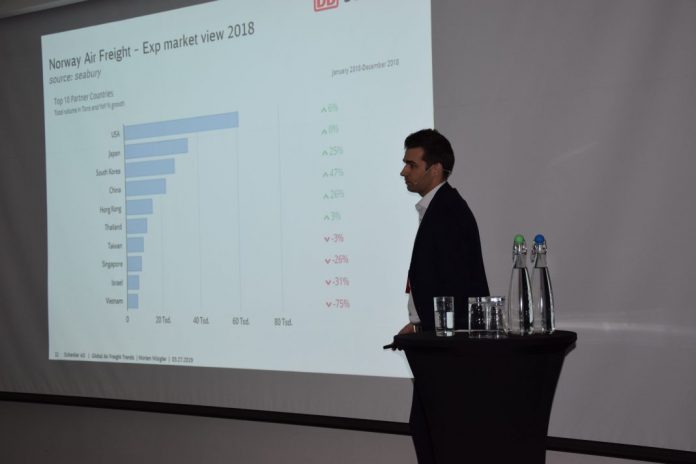DB Schenker Head of Air Freight Morten Würgler sees great opportunities in the seafood industry, but at the same time realises that there are bottlenecks.
On Wednesday, Schenker held his third seafood seminar at Gardermoen (Oslo Airport). When they started three years ago, it was a local seminar. Last year, transporters from all over Europe came. This year, nearly 200 people from all over the world attended.
Morten Würgler opened the seminar by talking about global trends in air freight.
“Seafood accounts for almost 90 per cent of air freight from Norway, but it is still the case that we are dependent on hubs in Europe to handle all seafood exports,” he said.
Increased capacity at Gardermoen is no solution
In his presentation, Würgler presented a graph of how much seafood exports vary from month to month compared to capacity.
“Thus, if the capacity from Gardermoen increases to take care of all the freight at all times, much of the aircraft will leave half full very often. It’s not a good solution,” he said.
Today, air freight accounts for 1.3 per cent of Norway’s CO2 emissions, according to Schenker. Würgler thinks its possible to lower down that number, without lowering capacity.
“If more differentiated from Avinor on costs for new and environmentally friendly aircraft versus those that emit more, I think we can approach the 2030 goals set by the government,” he said.
Avinor is the state-owned limited company that operates most of the civil airports in Norway.
Brexit
Würgler thinks Brexit will affect seafood shipping, but how it will, like most others, he is uncertain.
“We already noticed that there are changes in the market. London is a large airport with a lot of capacity, so one can imagine that there will be queues elsewhere in Europe. There are also alternative routes to England by boat, but we do not know what the realities are,” he said.
But one thing he is sure of is that seafood will find a way: “Seafood always finds new routes and often the cheapest,” he said.


